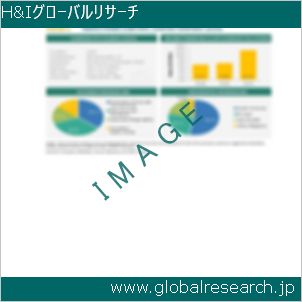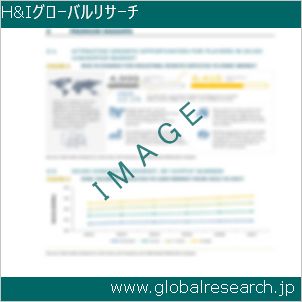1 Market Overview
1.1 Polymers for Electric Vehicle (EV) Introduction
1.2 Market Analysis by Type
1.2.1 Overview: Global Polymers for Electric Vehicle (EV) Revenue by Type: 2017 Versus 2021 Versus 2028
1.2.2 Polycarbonate (PC)
1.2.3 Polymethyl Methacrylate (PMMA)
1.2.4 Polyethylene (PE)
1.2.5 Others
1.3 Market Analysis by Application
1.3.1 Overview: Global Polymers for Electric Vehicle (EV) Revenue by Application: 2017 Versus 2021 Versus 2028
1.3.2 Vehicle Interior (Seats, Arm Rest, Head Rest, Others)
1.3.3 Vehicle Exterior (Car Body, Lights, Bumpers, Chassis, Others)
1.3.4 Under Bonnet
1.3.5 Electric Wiring & Lighting System
1.3.6 Others
1.4 Global Polymers for Electric Vehicle (EV) Market Size & Forecast
1.4.1 Global Polymers for Electric Vehicle (EV) Sales in Value (2017 & 2021 & 2028)
1.4.2 Global Polymers for Electric Vehicle (EV) Sales in Volume (2017-2028)
1.4.3 Global Polymers for Electric Vehicle (EV) Price (2017-2028)
1.5 Global Polymers for Electric Vehicle (EV) Production Capacity Analysis
1.5.1 Global Polymers for Electric Vehicle (EV) Total Production Capacity (2017-2028)
1.5.2 Global Polymers for Electric Vehicle (EV) Production Capacity by Geographic Region
1.6 Market Drivers, Restraints and Trends
1.6.1 Polymers for Electric Vehicle (EV) Market Drivers
1.6.2 Polymers for Electric Vehicle (EV) Market Restraints
1.6.3 Polymers for Electric Vehicle (EV) Trends Analysis
2 Manufacturers Profiles
2.1 AGC Chemicals
2.1.1 AGC Chemicals Details
2.1.2 AGC Chemicals Major Business
2.1.3 AGC Chemicals Polymers for Electric Vehicle (EV) Product and Services
2.1.4 AGC Chemicals Polymers for Electric Vehicle (EV) Sales, Price, Revenue, Gross Margin and Market Share (2019, 2020, 2021, and 2022)
2.2 Arkema
2.2.1 Arkema Details
2.2.2 Arkema Major Business
2.2.3 Arkema Polymers for Electric Vehicle (EV) Product and Services
2.2.4 Arkema Polymers for Electric Vehicle (EV) Sales, Price, Revenue, Gross Margin and Market Share (2019, 2020, 2021, and 2022)
2.3 Arlanxeo
2.3.1 Arlanxeo Details
2.3.2 Arlanxeo Major Business
2.3.3 Arlanxeo Polymers for Electric Vehicle (EV) Product and Services
2.3.4 Arlanxeo Polymers for Electric Vehicle (EV) Sales, Price, Revenue, Gross Margin and Market Share (2019, 2020, 2021, and 2022)
2.4 Asahi Kasei
2.4.1 Asahi Kasei Details
2.4.2 Asahi Kasei Major Business
2.4.3 Asahi Kasei Polymers for Electric Vehicle (EV) Product and Services
2.4.4 Asahi Kasei Polymers for Electric Vehicle (EV) Sales, Price, Revenue, Gross Margin and Market Share (2019, 2020, 2021, and 2022)
2.5 BASF SE
2.5.1 BASF SE Details
2.5.2 BASF SE Major Business
2.5.3 BASF SE Polymers for Electric Vehicle (EV) Product and Services
2.5.4 BASF SE Polymers for Electric Vehicle (EV) Sales, Price, Revenue, Gross Margin and Market Share (2019, 2020, 2021, and 2022)
2.6 Celanese
2.6.1 Celanese Details
2.6.2 Celanese Major Business
2.6.3 Celanese Polymers for Electric Vehicle (EV) Product and Services
2.6.4 Celanese Polymers for Electric Vehicle (EV) Sales, Price, Revenue, Gross Margin and Market Share (2019, 2020, 2021, and 2022)
2.7 China Petrochemical Group (Sinopec Group)
2.7.1 China Petrochemical Group (Sinopec Group) Details
2.7.2 China Petrochemical Group (Sinopec Group) Major Business
2.7.3 China Petrochemical Group (Sinopec Group) Polymers for Electric Vehicle (EV) Product and Services
2.7.4 China Petrochemical Group (Sinopec Group) Polymers for Electric Vehicle (EV) Sales, Price, Revenue, Gross Margin and Market Share (2019, 2020, 2021, and 2022)
2.8 Covestro
2.8.1 Covestro Details
2.8.2 Covestro Major Business
2.8.3 Covestro Polymers for Electric Vehicle (EV) Product and Services
2.8.4 Covestro Polymers for Electric Vehicle (EV) Sales, Price, Revenue, Gross Margin and Market Share (2019, 2020, 2021, and 2022)
2.9 Daikin Industries
2.9.1 Daikin Industries Details
2.9.2 Daikin Industries Major Business
2.9.3 Daikin Industries Polymers for Electric Vehicle (EV) Product and Services
2.9.4 Daikin Industries Polymers for Electric Vehicle (EV) Sales, Price, Revenue, Gross Margin and Market Share (2019, 2020, 2021, and 2022)
2.10 DowDuPont
2.10.1 DowDuPont Details
2.10.2 DowDuPont Major Business
2.10.3 DowDuPont Polymers for Electric Vehicle (EV) Product and Services
2.10.4 DowDuPont Polymers for Electric Vehicle (EV) Sales, Price, Revenue, Gross Margin and Market Share (2019, 2020, 2021, and 2022)
2.11 DSM Engineering Plastics
2.11.1 DSM Engineering Plastics Details
2.11.2 DSM Engineering Plastics Major Business
2.11.3 DSM Engineering Plastics Polymers for Electric Vehicle (EV) Product and Services
2.11.4 DSM Engineering Plastics Polymers for Electric Vehicle (EV) Sales, Price, Revenue, Gross Margin and Market Share (2019, 2020, 2021, and 2022)
2.12 Elkem
2.12.1 Elkem Details
2.12.2 Elkem Major Business
2.12.3 Elkem Polymers for Electric Vehicle (EV) Product and Services
2.12.4 Elkem Polymers for Electric Vehicle (EV) Sales, Price, Revenue, Gross Margin and Market Share (2019, 2020, 2021, and 2022)
2.13 Evonik Industries
2.13.1 Evonik Industries Details
2.13.2 Evonik Industries Major Business
2.13.3 Evonik Industries Polymers for Electric Vehicle (EV) Product and Services
2.13.4 Evonik Industries Polymers for Electric Vehicle (EV) Sales, Price, Revenue, Gross Margin and Market Share (2019, 2020, 2021, and 2022)
2.14 Jsr Corporation
2.14.1 Jsr Corporation Details
2.14.2 Jsr Corporation Major Business
2.14.3 Jsr Corporation Polymers for Electric Vehicle (EV) Product and Services
2.14.4 Jsr Corporation Polymers for Electric Vehicle (EV) Sales, Price, Revenue, Gross Margin and Market Share (2019, 2020, 2021, and 2022)
2.15 LANXESS
2.15.1 LANXESS Details
2.15.2 LANXESS Major Business
2.15.3 LANXESS Polymers for Electric Vehicle (EV) Product and Services
2.15.4 LANXESS Polymers for Electric Vehicle (EV) Sales, Price, Revenue, Gross Margin and Market Share (2019, 2020, 2021, and 2022)
2.16 LG Chem
2.16.1 LG Chem Details
2.16.2 LG Chem Major Business
2.16.3 LG Chem Polymers for Electric Vehicle (EV) Product and Services
2.16.4 LG Chem Polymers for Electric Vehicle (EV) Sales, Price, Revenue, Gross Margin and Market Share (2019, 2020, 2021, and 2022)
2.17 Lyondellbasell Industries
2.17.1 Lyondellbasell Industries Details
2.17.2 Lyondellbasell Industries Major Business
2.17.3 Lyondellbasell Industries Polymers for Electric Vehicle (EV) Product and Services
2.17.4 Lyondellbasell Industries Polymers for Electric Vehicle (EV) Sales, Price, Revenue, Gross Margin and Market Share (2019, 2020, 2021, and 2022)
2.18 Mitsubishi Engineering-Plastics Corporation
2.18.1 Mitsubishi Engineering-Plastics Corporation Details
2.18.2 Mitsubishi Engineering-Plastics Corporation Major Business
2.18.3 Mitsubishi Engineering-Plastics Corporation Polymers for Electric Vehicle (EV) Product and Services
2.18.4 Mitsubishi Engineering-Plastics Corporation Polymers for Electric Vehicle (EV) Sales, Price, Revenue, Gross Margin and Market Share (2019, 2020, 2021, and 2022)
2.19 SABIC
2.19.1 SABIC Details
2.19.2 SABIC Major Business
2.19.3 SABIC Polymers for Electric Vehicle (EV) Product and Services
2.19.4 SABIC Polymers for Electric Vehicle (EV) Sales, Price, Revenue, Gross Margin and Market Share (2019, 2020, 2021, and 2022)
2.20 Solvay
2.20.1 Solvay Details
2.20.2 Solvay Major Business
2.20.3 Solvay Polymers for Electric Vehicle (EV) Product and Services
2.20.4 Solvay Polymers for Electric Vehicle (EV) Sales, Price, Revenue, Gross Margin and Market Share (2019, 2020, 2021, and 2022)
2.21 Sumitomo Chemicals
2.21.1 Sumitomo Chemicals Details
2.21.2 Sumitomo Chemicals Major Business
2.21.3 Sumitomo Chemicals Polymers for Electric Vehicle (EV) Product and Services
2.21.4 Sumitomo Chemicals Polymers for Electric Vehicle (EV) Sales, Price, Revenue, Gross Margin and Market Share (2019, 2020, 2021, and 2022)
2.22 The Goodyear Tire & Rubber Company
2.22.1 The Goodyear Tire & Rubber Company Details
2.22.2 The Goodyear Tire & Rubber Company Major Business
2.22.3 The Goodyear Tire & Rubber Company Polymers for Electric Vehicle (EV) Product and Services
2.22.4 The Goodyear Tire & Rubber Company Polymers for Electric Vehicle (EV) Sales, Price, Revenue, Gross Margin and Market Share (2019, 2020, 2021, and 2022)
3 Polymers for Electric Vehicle (EV) Breakdown Data by Manufacturer
3.1 Global Polymers for Electric Vehicle (EV) Sales in Volume by Manufacturer (2019, 2020, 2021, and 2022)
3.2 Global Polymers for Electric Vehicle (EV) Revenue by Manufacturer (2019, 2020, 2021, and 2022)
3.3 Key Manufacturer Market Position in Polymers for Electric Vehicle (EV)
3.4 Market Concentration Rate
3.4.1 Top 3 Polymers for Electric Vehicle (EV) Manufacturer Market Share in 2021
3.4.2 Top 6 Polymers for Electric Vehicle (EV) Manufacturer Market Share in 2021
3.5 Global Polymers for Electric Vehicle (EV) Production Capacity by Company: 2021 VS 2022
3.6 Manufacturer by Geography: Head Office and Polymers for Electric Vehicle (EV) Production Site
3.7 New Entrant and Capacity Expansion Plans
3.8 Mergers & Acquisitions
4 Market Analysis by Region
4.1 Global Polymers for Electric Vehicle (EV) Market Size by Region
4.1.1 Global Polymers for Electric Vehicle (EV) Sales in Volume by Region (2017-2028)
4.1.2 Global Polymers for Electric Vehicle (EV) Revenue by Region (2017-2028)
4.2 North America Polymers for Electric Vehicle (EV) Revenue (2017-2028)
4.3 Europe Polymers for Electric Vehicle (EV) Revenue (2017-2028)
4.4 Asia-Pacific Polymers for Electric Vehicle (EV) Revenue (2017-2028)
4.5 South America Polymers for Electric Vehicle (EV) Revenue (2017-2028)
4.6 Middle East and Africa Polymers for Electric Vehicle (EV) Revenue (2017-2028)
5 Market Segment by Type
5.1 Global Polymers for Electric Vehicle (EV) Sales in Volume by Type (2017-2028)
5.2 Global Polymers for Electric Vehicle (EV) Revenue by Type (2017-2028)
5.3 Global Polymers for Electric Vehicle (EV) Price by Type (2017-2028)
6 Market Segment by Application
6.1 Global Polymers for Electric Vehicle (EV) Sales in Volume by Application (2017-2028)
6.2 Global Polymers for Electric Vehicle (EV) Revenue by Application (2017-2028)
6.3 Global Polymers for Electric Vehicle (EV) Price by Application (2017-2028)
7 North America by Country, by Type, and by Application
7.1 North America Polymers for Electric Vehicle (EV) Sales by Type (2017-2028)
7.2 North America Polymers for Electric Vehicle (EV) Sales by Application (2017-2028)
7.3 North America Polymers for Electric Vehicle (EV) Market Size by Country
7.3.1 North America Polymers for Electric Vehicle (EV) Sales in Volume by Country (2017-2028)
7.3.2 North America Polymers for Electric Vehicle (EV) Revenue by Country (2017-2028)
7.3.3 United States Market Size and Forecast (2017-2028)
7.3.4 Canada Market Size and Forecast (2017-2028)
7.3.5 Mexico Market Size and Forecast (2017-2028)
8 Europe by Country, by Type, and by Application
8.1 Europe Polymers for Electric Vehicle (EV) Sales by Type (2017-2028)
8.2 Europe Polymers for Electric Vehicle (EV) Sales by Application (2017-2028)
8.3 Europe Polymers for Electric Vehicle (EV) Market Size by Country
8.3.1 Europe Polymers for Electric Vehicle (EV) Sales in Volume by Country (2017-2028)
8.3.2 Europe Polymers for Electric Vehicle (EV) Revenue by Country (2017-2028)
8.3.3 Germany Market Size and Forecast (2017-2028)
8.3.4 France Market Size and Forecast (2017-2028)
8.3.5 United Kingdom Market Size and Forecast (2017-2028)
8.3.6 Russia Market Size and Forecast (2017-2028)
8.3.7 Italy Market Size and Forecast (2017-2028)
9 Asia-Pacific by Region, by Type, and by Application
9.1 Asia-Pacific Polymers for Electric Vehicle (EV) Sales by Type (2017-2028)
9.2 Asia-Pacific Polymers for Electric Vehicle (EV) Sales by Application (2017-2028)
9.3 Asia-Pacific Polymers for Electric Vehicle (EV) Market Size by Region
9.3.1 Asia-Pacific Polymers for Electric Vehicle (EV) Sales in Volume by Region (2017-2028)
9.3.2 Asia-Pacific Polymers for Electric Vehicle (EV) Revenue by Region (2017-2028)
9.3.3 China Market Size and Forecast (2017-2028)
9.3.4 Japan Market Size and Forecast (2017-2028)
9.3.5 Korea Market Size and Forecast (2017-2028)
9.3.6 India Market Size and Forecast (2017-2028)
9.3.7 Southeast Asia Market Size and Forecast (2017-2028)
9.3.8 Australia Market Size and Forecast (2017-2028)
10 South America by Region, by Type, and by Application
10.1 South America Polymers for Electric Vehicle (EV) Sales by Type (2017-2028)
10.2 South America Polymers for Electric Vehicle (EV) Sales by Application (2017-2028)
10.3 South America Polymers for Electric Vehicle (EV) Market Size by Country
10.3.1 South America Polymers for Electric Vehicle (EV) Sales in Volume by Country (2017-2028)
10.3.2 South America Polymers for Electric Vehicle (EV) Revenue by Country (2017-2028)
10.3.3 Brazil Market Size and Forecast (2017-2028)
10.3.4 Argentina Market Size and Forecast (2017-2028)
11 Middle East & Africa by Country, by Type, and by Application
11.1 Middle East & Africa Polymers for Electric Vehicle (EV) Sales by Type (2017-2028)
11.2 Middle East & Africa Polymers for Electric Vehicle (EV) Sales by Application (2017-2028)
11.3 Middle East & Africa Polymers for Electric Vehicle (EV) Market Size by Country
11.3.1 Middle East & Africa Polymers for Electric Vehicle (EV) Sales in Volume by Country (2017-2028)
11.3.2 Middle East & Africa Polymers for Electric Vehicle (EV) Revenue by Country (2017-2028)
11.3.3 Turkey Market Size and Forecast (2017-2028)
11.3.4 Egypt Market Size and Forecast (2017-2028)
11.3.5 Saudi Arabia Market Size and Forecast (2017-2028)
11.3.6 South Africa Market Size and Forecast (2017-2028)
12 Raw Material and Industry Chain
12.1 Raw Material of Polymers for Electric Vehicle (EV) and Key Manufacturers
12.2 Manufacturing Costs Percentage of Polymers for Electric Vehicle (EV)
12.3 Polymers for Electric Vehicle (EV) Production Process
12.4 Polymers for Electric Vehicle (EV) Industrial Chain
13 Sales Channel, Distributors, Traders and Dealers
13.1 Sales Channel
13.1.1 Direct Marketing
13.1.2 Indirect Marketing
13.2 Polymers for Electric Vehicle (EV) Typical Distributors
13.3 Polymers for Electric Vehicle (EV) Typical Customers
14 Research Findings and Conclusion
15 Appendix
15.1 Methodology
15.2 Research Process and Data Source
15.3 Disclaimer
❖ 免責事項 ❖
http://www.globalresearch.jp/disclaimer


